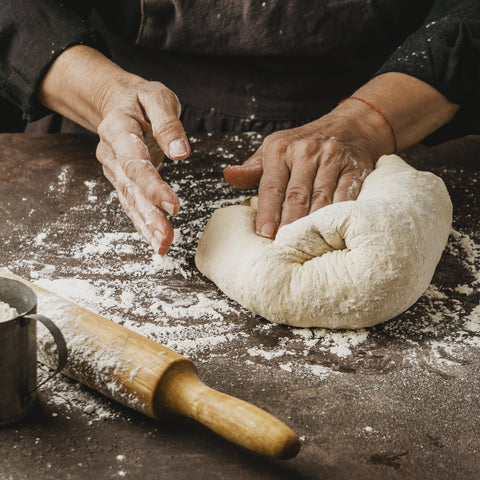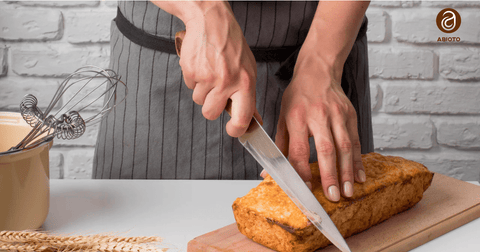Dough Proving is an Important Part of Making Bread
Dough proving is an important part of making bread because it changes the taste and texture of the bread. It means letting the dough sit and rise in a warm, damp place so that the yeast can work and make gluten. There are many ways to prove dough, but more and more home and professional bakers are using a dough proofing box. A dough proofing box, which is often called the best bread making kit, is a special tool that lets the dough proof in a controlled environment. It usually has a humidifier and a temperature control chamber to keep the humidity and temperature levels steady. This makes sure that the dough rises evenly and consistently, which makes the bread light and fluffy. A dough proofing box can also speed up the proofing process and make sure the dough is ready to bake when it needs to be.
What Does a Dough-Proofing Box Do?
A dough proving box is a place where dough can rise before it is baked. Proofreading is the name of this process. The box helps the dough rise quickly and evenly in a warm, humid place, which makes the bread taste and feel better. Proofing is a key step in making bread, and a dough proofing box can help make the process easier and more consistent. It can be hard to keep the right temperature and humidity for proving without a proofing box, especially in cooler or drier climates. Dough proofing boxes come in a range of sizes and styles. Some are small enough to fit on a countertop, while others are big enough for businesses to use. Some types have built-in controls for temperature and humidity that work on their own, while others need to be set and watched by hand. A dough proving box can help both professional and amateur bakers get the same great results every time.
The Science Behind Proofing Dough
Proofing the dough is an important part of making bread. Before baking, the dough needs to rise and rest. This step is very important because it makes the dough rise, which makes CO2. The dough traps gas, which makes it rise and get fluffy. In this part, we'll talk about the science behind proving dough.
How Temperature Changes Proofing
The right temperature is very important for letting dough rise. The best temperature for proofing is between 75°F and 85°F (24°C and 29°C). The yeast in the dough gets very active at this temperature, which makes the dough rise quickly. The dough will take longer to rise if the temperature is too low, which will make the final product denser. But if the temperature gets too high, the yeast dies and the dough doesn't rise.
Proofing and Humidity
When proving dough, humidity is another important thing to think about. When the humidity is between 70% and 80%, proofing works best. The dough will dry out and form a hard crust if the air is too dry. But if the air is too humid, the dough gets sticky and hard to work with. Bakers often use a dough proofing box to make sure the temperature and humidity are just right. A proving box is a box that keeps the dough at the right temperature and humidity so that it rises correctly. Last but not least, dough proving is a science that requires careful thought about temperature and humidity. If bakers know how these parts work, they can make bread that is soft and tasty.
Different Kinds of Proof Boxes for Dough
When it comes to proving dough, having the right tools can make a big difference. Think about these kinds of proofing boxes for dough:
-
Brod & Taylor Slow Cooker with Proofer That Folds
The Brod & Taylor Folding Proofer & Slow Cooker is a kitchen tool that can do more than one thing. It can proof dough and cook food. It can hold two half-sheet pans and can heat up to 195 degrees F. The proofer is made of ABS plastic and aluminum, and the shelves are covered in Teflon® co-polymer, which makes them easy to clean. You can also fold it up to save space. -
Set of DoughMate Artisan Dough Trays
The Dough Mate Artisan Dough Tray Kit is made just for proving dough. The fiberglass top and food-grade polypropylene plate make it easy to see the dough. The tray can hold up to ten pounds of dough and is easy to clean because it doesn't stick. The bundle also comes with a cookbook of recipes and a dough scraper. -
Make Your Own Proofing Boxes
If you don't have a lot of money or want to do it yourself, you can make your own proofing box at home. Use a plastic storage container with a lid and a bowl of hot water to make the room warm and humid. Wrap a cardboard box in polycarbonate or aluminum foil and put a light bulb inside to keep it warm. Make sure that the dough proofing box you choose is the right size for your dough and meets your needs. You can always get perfectly proofed dough if you have the right tools.
How to Proof Dough
Proofing is an important part of baking that makes the dough rise and taste better. This is a very important step that will decide if your pizza or bread dough will work or not. This section will show you how to proof dough for bread and pizza.
Proofing Dough for Bread
Proofing is the step after kneading bread dough that lets it rise. This step is very important because it makes gluten in the dough and air pockets, which makes the bread light and fluffy. Different recipes call for different proofing times and temperatures, but bread dough should be proofed at room temperature for one to two hours. Put the bread dough in a bowl with a lid or a dough box and let it rise in a warm, draft-free place. A dough box is a special container that keeps the dough at the right temperature and humidity while it rises. It helps create the best conditions for dough to rise and taste better.
Proofing the Pizza Dough
You can proof pizza dough the same way you proof bread dough, but it doesn't take as long. Let the pizza dough rise at room temperature for 30 minutes to an hour. The temperature and proofing time you need will depend on the recipe and the type of crust you want. To proof pizza dough, break it up into small balls and put them in a sealed container or dough box. Let the dough rise at room temperature until it is twice as big. This method makes a crust that is light and airy on the outside and chewy on the inside. Last but not least, the proving step is very important for making good pizza and bread dough. Using a dough box or a closed container and keeping an eye on the temperature and humidity will help your dough rise properly and have the right texture and flavor.
Benefits of Using a Dough Proofing Box
There are many benefits to using a dough proofing box, whether you're a beginner or a pro baker. Here are some of the best reasons to use a dough proofing box:
-
The Temperature Stays the Same: One good thing about using a dough proofing box is that it keeps the temperature steady while the bread rises. This is important because yeast is sensitive to temperature and can be affected by changes in the environment. A dough proofing box keeps your dough at a steady temperature so that it rises the right way.
-
The Setting: A dough proofing box makes a warm, humid space that is perfect for letting bread rise. This environment keeps the dough moist and stretchy, which makes the bread lighter and fluffier. A dough proofing box can keep your dough safe from drafts and other things in the environment that could mess up the proofing process.
-
Reduce the Amount of Time: A dough proving box can also help you save time when you bake. A faster and more consistent proofing process can help you make bread faster. This is great for bakers who want to make fresh bread but don't have a lot of time.
-
Proof the Bread: A dough proofing box is made just for bread proofing, so it creates the perfect conditions for yeast to work. This can help the bread rise more evenly and make the texture and crumb better. A dough proofing box can also help keep bread from getting too dense, which can happen if it isn't proofed long enough.
Things to Think About When Choosing a Dough Proofing Box
When choosing a dough proofing box, there are a few things you should think about to make sure you get the best one for your needs. Here are some things to keep in mind:
-
Size and Skill: The proofing box for the dough needs to be the right size and volume. The box needs to be big and deep enough to hold the dough. Think about how many loaves or batches of dough you'll be making and choose a box that can hold that many.
-
The Materials Used and How Long They Last: The dough proofing box's strength and material are also very important. Look for a box made of strong materials that can be used over and over again. Use items that are free of BPA and safe for food to keep your dough from getting dirty.
-
Control the Temperature and Humidity: To get the best proofing for dough, you need to keep an eye on the temperature and humidity. Get a box that lets you change the temperature and humidity levels to meet your needs. To keep the humidity level stable, you'll also need a water tray.
More Ways to Use Dough Proofing Boxes
You can use dough proving boxes for more than just bread dough. They can be used for a lot of other things as well. Here are some more ways to use dough proofing boxes:
-
Some dough proving boxes have a slow cooker mode that lets you cook food at a low temperature for a long time. This is great for soups, stews, and other dishes that need to cook for a long time.
-
Proofer mode: You can also use dough proofing boxes to ferment other foods, like yogurt and cultured butter. The box's steady temperature and humidity make it a great place for these foods to ferment.
-
Making yogurt at home can be hard, but a dough proofing box can help a lot. Put some milk and yogurt culture in a jar, put it in the box, and let it sit for a few hours to ferment. The final result is tasty yogurt made at home.
-
Like yogurt, cultured butter needs a warm, humid place to ferment properly. A dough proving box can help you make cultured butter at home in the best way possible.
-
You can make sauerkraut, kimchi, kombucha, yogurt, and cultured butter in dough proofing boxes. The box's steady temperature and humidity make it easier to get the fermentation to work.
-
Some bread proofing boxes use radiant heat to heat the food inside. This is helpful for keeping food warm, like when you serve a buffet.
-
Dough proofing boxes usually work at low temperatures, which is great for keeping food warm without cooking it more. You can use this to keep food warm at a party or event, and you can also use it to keep food fresh while you wait for guests.
-
To sum up, dough proofing boxes are useful tools that can be used for more than just bread dough. A dough proofing box can keep the right temperature and humidity levels for making yogurt, butter culture, and other foods that have been fermented.
How to Clean and Take Care of a Dough Proofing Box
Keep your dough proofing box clean and in good shape to make sure it works well and makes good dough. Here are some tips for keeping your dough proofing box clean and in good shape:
-
Cleaning on a Regular Basis: Clean your dough proofing box often to keep flour and other debris from building up. Wipe the inside and outside of the box with a soft cloth or sponge. Make sure to get rid of any extra flour or dough that has built up on the trays or shelves.
-
Cleaning the Water Tray: The water tray in your dough proofing box keeps the humidity level steady. Cleaning the water tray often stops mold and germs from growing. Remove the water tray from the box and wash it with warm, soapy water. Wash well and dry with a clean cloth.
-
How to Use Doughmate: You can use a Dough Mate to clean your dough proofing box well. You can put it on the box's shelves or trays because it doesn't stick to them. The Dough Mate keeps dough from sticking to the box, which makes it easier to clean up. It also makes your proofing box last longer.




Comments (0)
There are no comments for this article. Be the first one to leave a message!